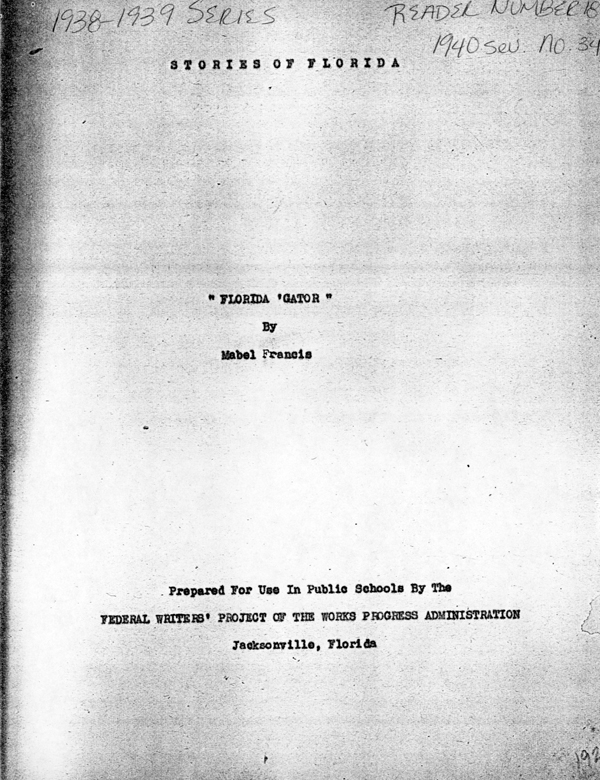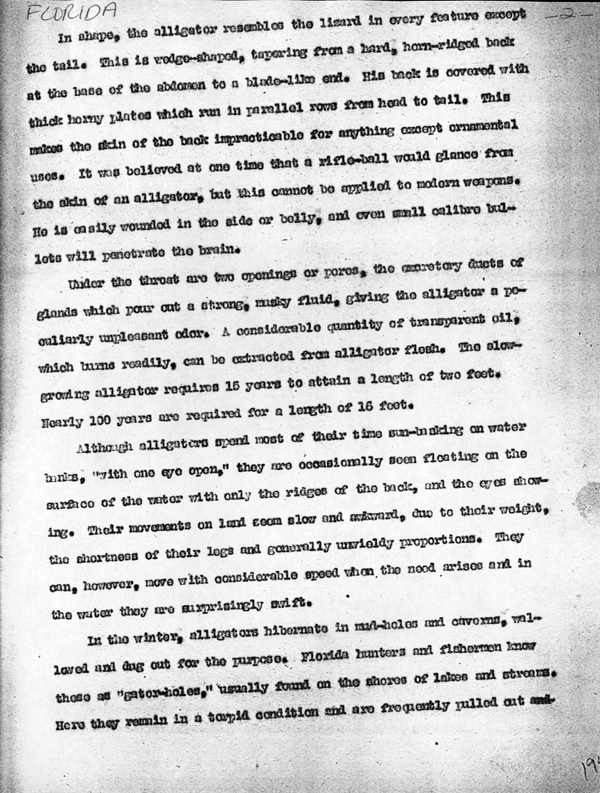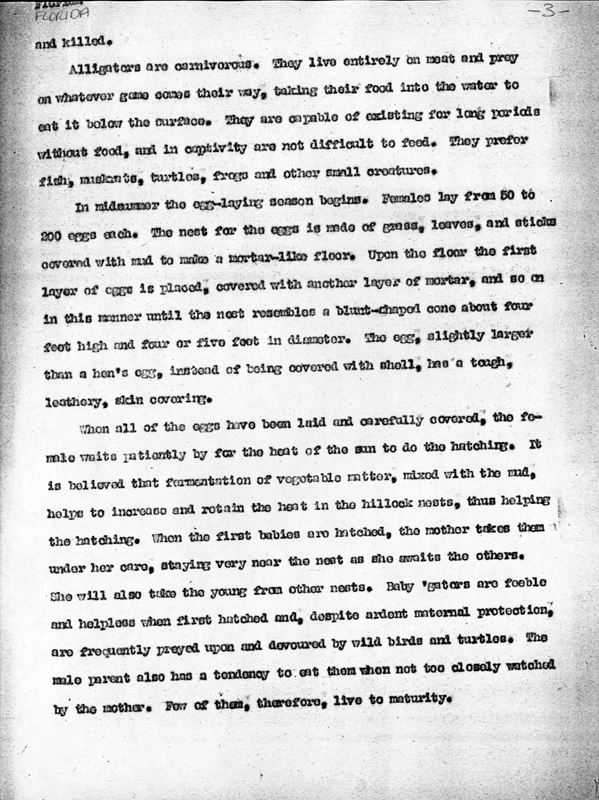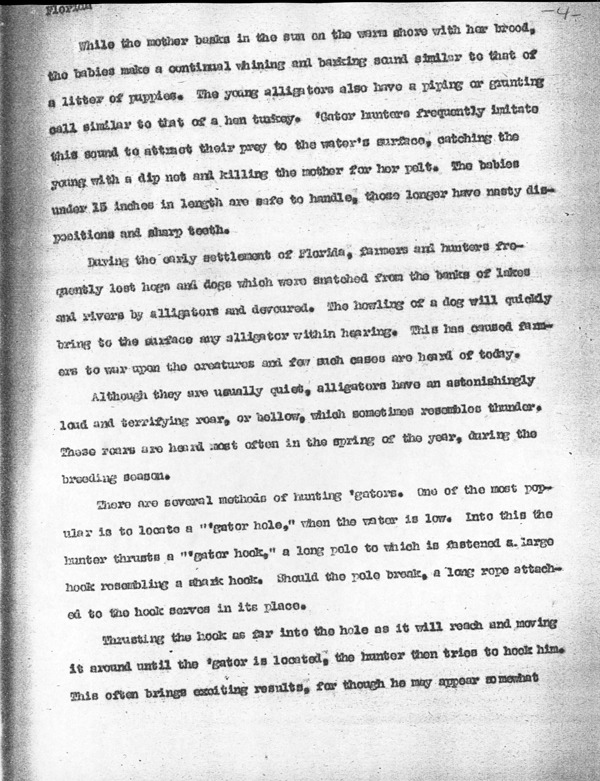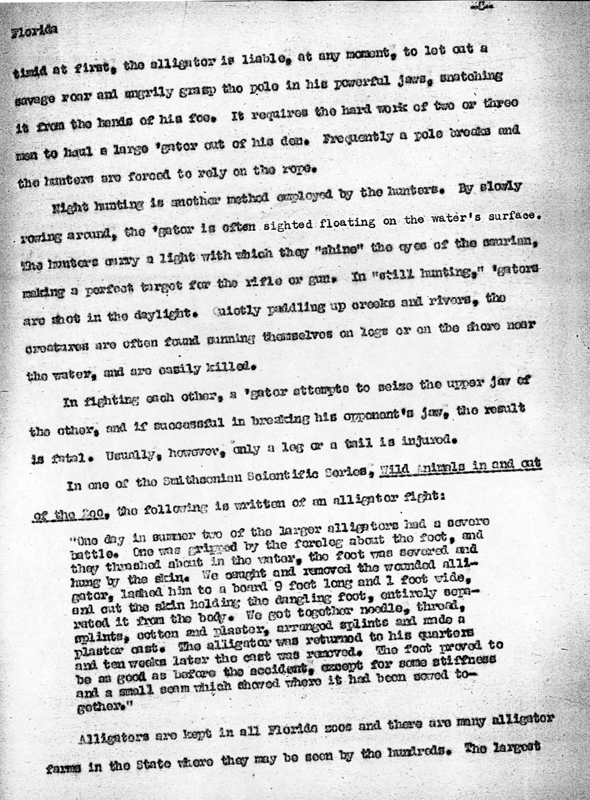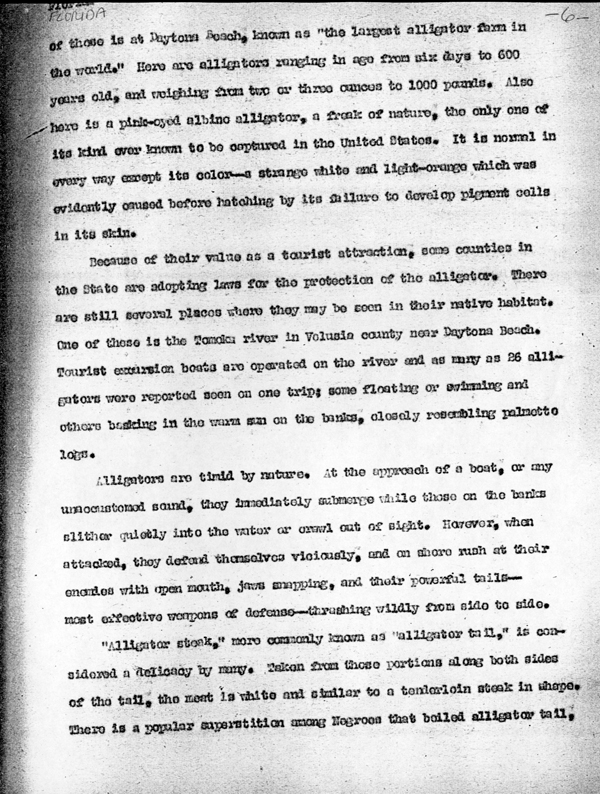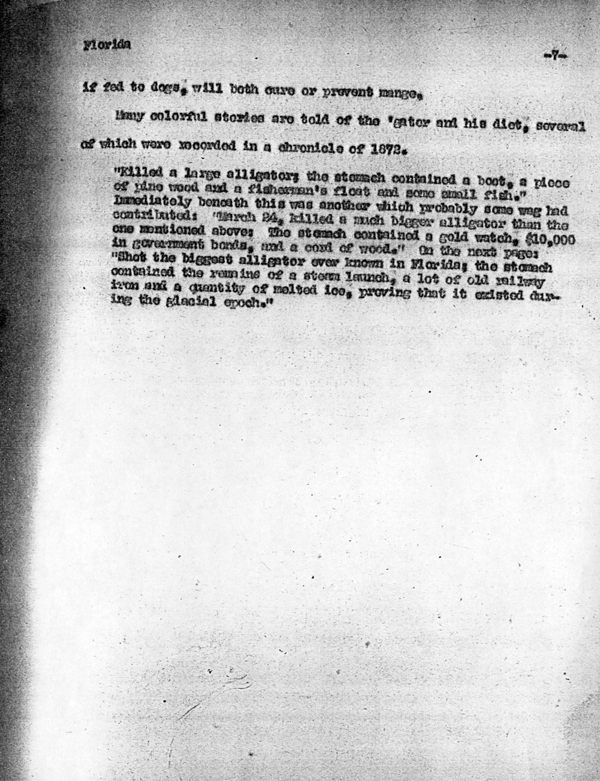Florida Memory is administered by the Florida Department of State, Division of Library and Information Services, Bureau of Archives and Records Management. The digitized records on Florida Memory come from the collections of the State Archives of Florida and the special collections of the State Library of Florida.

State Archives of Florida
- ArchivesFlorida.com
- State Archives Online Catalog
- ArchivesFlorida.com
- ArchivesFlorida.com
State Library of Florida
Related Sites

Description of previous item
Description of next item

Title
Published Date
"FLORIDA 'GATOR"
By
Mabel Francis
Although the alligator may be considered a symbol of Florida's wild
life, it is becoming more and more difficult to find him in his native haunt.
Fishermen frequently carry rifles or revolvers, just in case they see a
'gator, and hunters seldom pass up an opportunity to take a shot at one.
Skin hunters have taken the heaviest toll from his tribe; the skins in many
forms adorning shelves of souvenir and gift shops over the country. Bags,
belts, slippers, lamps and many other articles, made from "'gator hide,"
attract the eyes of purchasers.
In recent years, the live baby 'gator has become a popular Florida
souvenir. Small cages containing these baby saurians, from six to 15 inches
in length, can be seen on the streets of almost any city in the State.
The origin of the name "alligator" is a somewhat uncertain, but is
supposedly a corruption of the Spanish "el lagarto," from the Latin
"Lacertus," meaning lizard.
Because of the close resemblance, early naturalists considered the
alligator and crocodile as one genus, or classification. The alligator differs,
however, having a broader and shorter head, more teeth, with cavities or pits
in the upper jaw into which the long canine teeth of the under jaw fit. He
also has a blunter snout and his feet are less fully webbed than those of the
crocodile.
Title
Subject
Description
Creator
Source
Date
Contributor
Format
Language
Type
Identifier
Published Date
Image URL
Thumbnail
Transcript Path
Image Path
Image Path - Large
Chicago Manual of Style
Francis, Mabel. Florida 'Gator. 1940. State Archives of Florida, Florida Memory. <https://www.floridamemory.com/items/show/181518>, accessed 30 December 2025.
MLA
Francis, Mabel. Florida 'Gator. 1940. State Archives of Florida, Florida Memory. Accessed 30 Dec. 2025.<https://www.floridamemory.com/items/show/181518>
AP Style Photo Citation
(State Archives of Florida/Francis)

 Listen: The Folk Program
Listen: The Folk Program